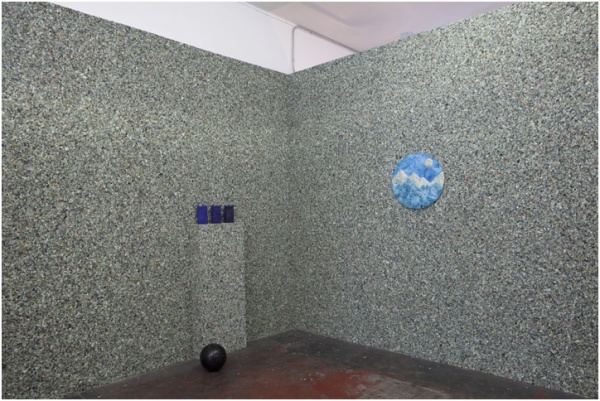
In his first solo exhibition sub, at Farewell Books in Austin, Erik Shane Swanson transforms a bookstore gallery into a dizzying padded environment containing several strangely illusionistic objects. Carpet padding covers all four walls in an industrial amalgam of miscellaneous recycled foams, tapes, and trash, creating a visual noise—like television static—that competes with the understated presentation of handmade forms (especially as the same recycled material also covers the plinths made to support them). Yet there, quietly, are meticulously crafted wax casts of common household objects—a black soccer ball, three blue freezer packs, and a yellow flashlight—as well as an icy-hued plaster tondo depicting a mountainscape. As the sole image, the mountainscape is the only obviously made thing in the room, but still it, too, is materially deceptive. Made from a faux-marbling process called scagliola, the plaster imitates a rare and valuable material, and to notice this imitation is to perceive the crux of the exhibition. Through layers of twists and reversals, both material and conceptual, Swanson tests the nature of representation and imitation—the essential problem of mimetic art. He compounds not just figure and ground, image and object, but also form and function, authenticity and illusion, and in doing so raises questions regarding values attributed to their primacy.
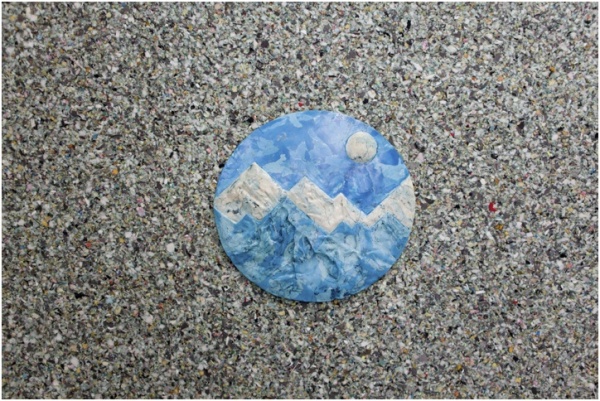
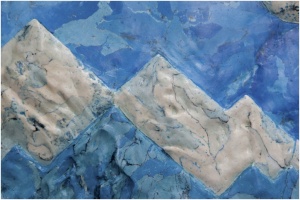
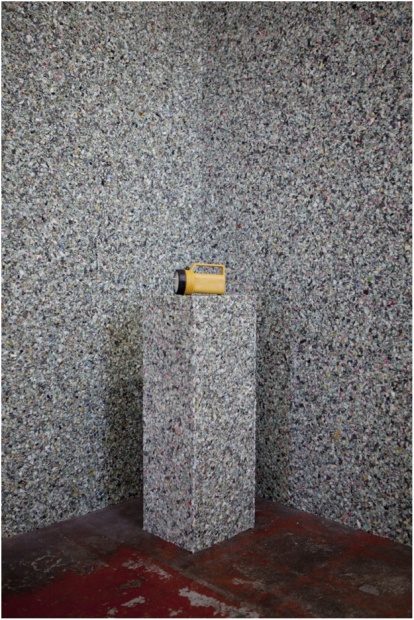
sub is an extension of ideas that that Swanson began to develop during the final year of his MFA program at UT-Austin. So for those who visited Pool, the 2014 MFA thesis exhibition at UT’s Visual Arts Center, elements of his current installation will be familiar. In that show, Swanson’s thesis project Camofaux consisted of a twelve-foot-tall Airdancer (one of those waggling tubular figures used as roadside attractions) made of scagliola, a wall of carpet padding, and wax casts of a cooler and a flashlight. Like sub, it dealt with ideas of imitation through material shifts (the “faux”) and the effects of surface in relation to surroundings (the “camo”). But whereas the two installations share material components as well as general ideas, the emphases differ. Due to its sheer size and uncanny monumentality, the scagliola Airdancer stood out as the dominant feature of Camofaux; the wall of carpet padding became relevant insofar as it alternately contrasted or camouflaged that central figure, and the wax casts, though compelling as objects, seemed auxiliary rather than fully integrated into the installation. As a result, the dominant interaction between the Airdancer and the carpet padding emphasized a reversibility of the conspicuous and the camouflaged as affected by material and context.

Installation view of Camofaux at the Visual Arts Center, 2014.
sub elaborates these concerns with a stronger and more complex integration among all elements. The carpet padding functions as a white noise capable of slipping in and out of consciousness, thus allowing for appreciation of the subtler handmade elements to develop through a process of slow looking. At first glance each component appears self-evident, but upon closer examination every one reveals playful tricks that betray the material deceptiveness of the installation. Take Torch, a sculptural work that includes both the wax “flashlight” and the plinth where it sits. The color, shape, and surface texture of the sculpture constitute a convincing replica of the source object, but with three wicks protruding from the “protective glass,” the sculpture references its wax materiality and so discloses its illusion. Likewise, the plinth’s exterior of granite-like carpet padding and a scagliola top conflates two forms of imitative stone in a playful denial of its construction from chipboard. To realize the objects’ true constitution is not to exhaust their appeal, however, but instead to discover another conceptual layer of the work related to the processes of production. Swanson’s wax casts in a sense double the source objects’ industrial production, since the plastic objects are themselves already casts produced through a process of injection molding. So for instance, the cast in Torch retains the flashlight’s witness mark, the raised line around the product that occurs where the two halves of the mold meet. But is it the mark of the source object or that of Swanson’s cast, or a compound of both? Such ambiguity between object and image, or imitation, occurs throughout the installation, which rewards slow looking as it blurs one’s perceptions of the primary or the “real.”
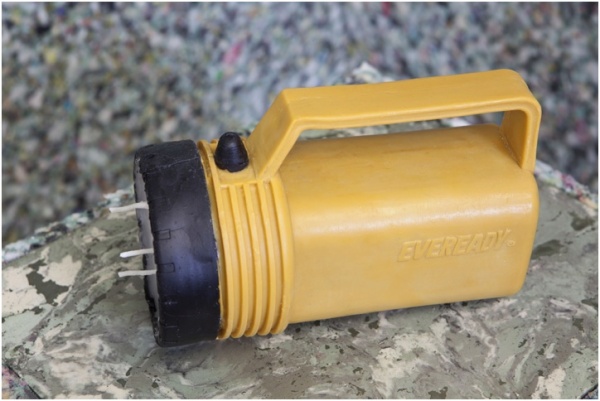
sub will be on view through October 19, 2014 at Farewell Books in Austin. All photographs by James Scheuren.
Robin K. Williams is a doctoral candidate in art history at The University of Texas at Austin. Her research concerns interrelationships between the visual and performing arts, especially in New York City during the 1960s and 1970s.


